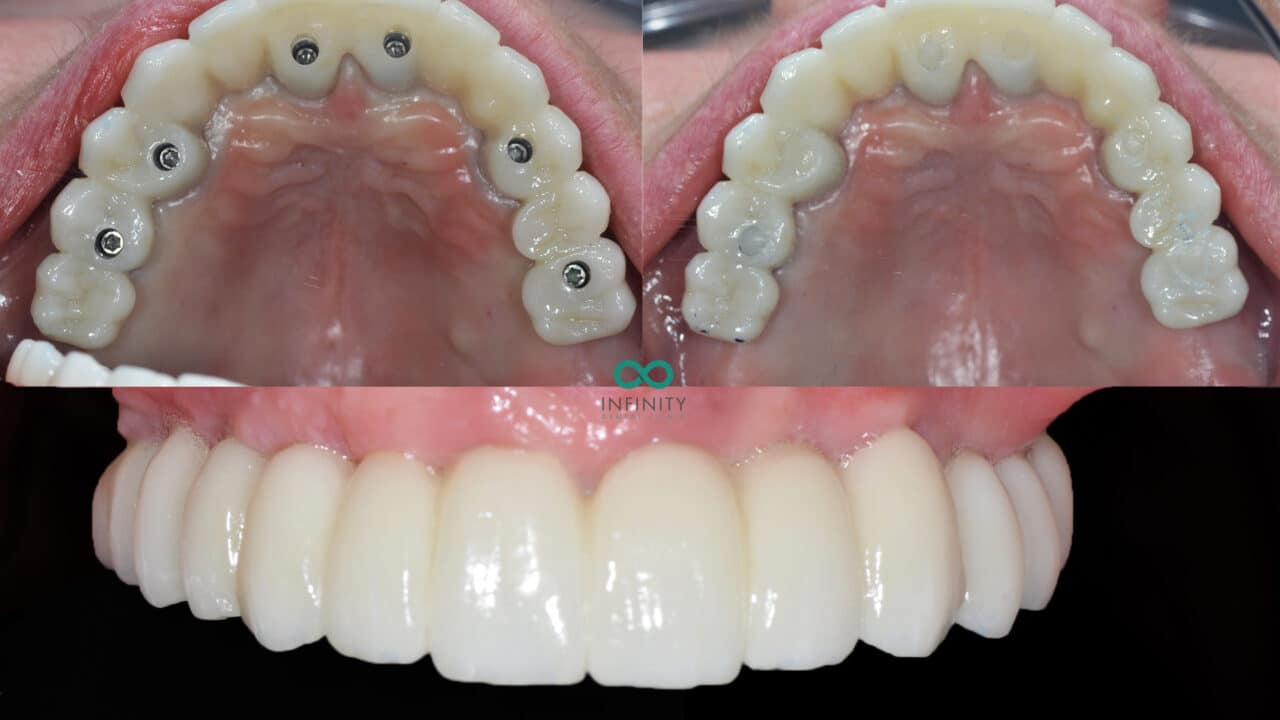8 Easy Facts About Dental Sense Explained
8 Easy Facts About Dental Sense Explained
Blog Article
How Dental Sense can Save You Time, Stress, and Money.
Table of ContentsRumored Buzz on Dental SenseWhat Does Dental Sense Mean?The Facts About Dental Sense RevealedAn Unbiased View of Dental Sense
are medical devices surgically dental implanted right into the jaw to bring back an individual's ability to eat or their appearance. They give support for fabricated (fake) teeth, such as crowns, bridges, or dentures. When a tooth is shed because of injury or illness, a person can experience issues such as quick bone loss, malfunctioning speech, or changes to eating patterns that result in pain.Dental dental implant systems contain a dental implant body and oral implant abutment and might additionally include a joint addiction screw. Root canal procedure. The oral implant body is operatively placed in the jawbone instead of the tooth's root. The oral implant joint is normally connected to the dental implant body by the abutment fixation screw and prolongs with gums right into the mouth to support the connected synthetic teeth
(https://ameblo.jp/dentalsense1/entry-12882048969.html)Framework of The Oral Implant System selecting dental implants, talk to your oral supplier concerning the prospective benefits and risks, and whether you are a prospect for the treatment. Points to think about: Your total health is a vital consider determining whether you are a great candidate for oral implants, the length of time it will certainly require to heal, and just how long the implant might remain in place.
Cigarette smoking might influence the healing process and reduce the lasting success of the implant. The recovery procedure for the dental implant body might take several months or longer, throughout which time you commonly have a momentary abutment in location of the tooth. the dental implant procedure: Very carefully follow the dental hygiene guidelines provided to you by your oral copyright.
Dental Sense Fundamentals Explained
Implant failure can lead to the need for another operation to deal with or replace the dental implant system. Restores the capability to chew Restores cosmetic look Helps keep the jawbone from shrinking as a result of bone loss Maintains the health and wellness of the surrounding bone and gums Assists maintain surrounding (neighboring) teeth stable Boosts top quality of life Damage to bordering natural teeth throughout dental implant placement Injury to the surrounding tissues during surgery, such as sinus opening Injury during surgical procedure (for instance, fracture of surrounding jawbone) Insufficient feature, such as seeming like the teeth do not bite with each other typically An experience that the tooth hangs or twisting in position resulting from a joint screw loosening up Implant body failure (looseness of the implant body) due to systemic infection, which may be extra most likely in individuals with unchecked diabetics issues due to regional infection in bone and periodontals supporting the implant body because of delayed healing, which may be most likely in clients that smoke Difficulty cleansing the gum tissues around the implant, leading to poor dental hygiene Untreated gum illness Post-surgical numbness as a result of nerve impingement or damage Constantly inform health and wellness treatment companies and imaging professionals that you have oral implants before any kind of magnetic resonance imaging (MRI) or x-ray procedures.
FDA is not familiar with any type of adverse occasions reported for MRI or x-ray treatments with oral implants. Oral implants systems are commonly made from materials that follow international consensus criteria of the International Company for Standardization (ISO) or ASTM International. These standards have details of what makes a risk-free product.

A dental implant is a framework that replaces a missing out on tooth. With screw-like tools, the specialist inserts an implant right into the jawbone, and it functions as an anchor for a man-made tooth, called a crown. A device called a joint links the man-made tooth to the dental implant. The crown is customized to fit the individual's mouth and match the shade of their teeth.
Rumored Buzz on Dental Sense
Some people are not qualified for oral implant surgical procedure. It is for oral specialists to operate on people with: intense illnessuncontrollable metabolic diseasebone or soft cells illness or infectionIf these concerns are resolved, a person can have the surgical treatment. In, oral doctors avoid running on people with: If people with any one of the above undertake dental implant surgical procedure, there is a higher threat of the dental implant falling short.

Dental dental implant surgical procedure is an individualized procedure. Provide you time to heal. Connect the message and last crown, bridge or denture.
Next, your doctor will thoroughly position the oral implant into your jaw. If your dental implant is near the front of your mouth, your dental practitioner will make a momentary tooth for you to put on up until you recover.
All about Dental Sense
Your copyright can inform you what to anticipate in important source your situation. Throughout the healing phase, your jawbone needs to fuse to the oral implant. This procedure, called osseointegration, is essential for security and long-lasting success. This process can take anywhere from 3 to 9 months. Sometimes, it may take longer.
Once your implant heals, your dental professional can attach the joint (small adapter message) and your final restoration (crown, bridge or denture). This usually takes about one hour to finish and may call for a second small surgery. You should not feel any type of discomfort during your dental implant treatment since your supplier will use drug to numb your gums.
Report this page